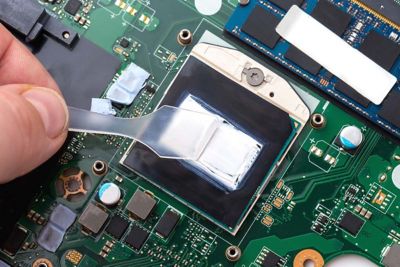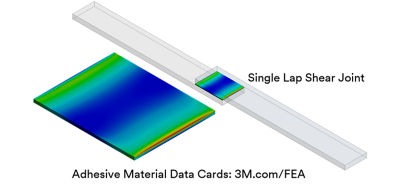-
-
学生向け無料ソフトウェアにアクセス
Ansysは次世代の技術者を支援します
学生は、世界クラスのシミュレーションソフトウェアに無料でアクセスできます。
-
今すぐAnsysに接続!
未来をデザインする
Ansysに接続して、シミュレーションが次のブレークスルーにどのように貢献できるかを確認してください。
国および地域
無料トライアル
製品およびサービス
リソースとトレーニング
当社について
Back
製品およびサービス
ANSYS BLOG
March 4, 2022
Sticking Together: 3M and Ansys Train Engineers on Simulating Adhesives
Adhesives have grown to play a critical role in our modern-day lives, and nowhere is the use of adhesives more apparent than in the automotive industry. Initially used in the 1950s for mounting faceplates and trims, they have recently found increasing usage in critical areas like brake shoes and hood assembly components. Today, electric vehicles are expected to extensively use adhesives in electric motors, battery packs, and wiring.
Along with the automotive industry, strict environmental and safety standards requiring sustainable, high-strength components have led to increasing use of adhesives in the aerospace industry. Their versatility has also led to widespread use in the medical industry in bandages and surgical procedures like implants, and also in the electronic industry to bond various printed circuit board (PCB) components. Many of these advances have taken place through research at companies like 3M. Adhesives from 3M are widely found in consumer goods, packaging, and various electronic devices.

Compared with other fastening methods like stitching, riveting, welding, or bolting, adhesive joints have a more even load distribution across bonded parts. This eliminates stress concentrations around rivets and holes in panels, leading to easier design considerations and longer product life. Weight savings can be considerable, as thin components can be joined efficiently with adhesives over other fastening methods. Over the years, research has helped develop adhesives for use even in hostile environmental conditions.
What are PSAs?
Much of the popularity of adhesives is due to the development of pressure-sensitive adhesives (PSAs). PSAs are a type of non-reactive tape that bonds dissimilar components like plastics and aluminum. Adhesive tapes we use at home and school for artwork and packaging are an excellent example of PSAs. The mechanics through which bodies are held together by PSAs is based on the same atomic forces that enable a gecko to grab on to the walls of a smooth glass pane. We previously discussed the intricacies on the adhesion and peeling process of very soft materials like those used in PSAs in our blog, The Science of Stickiness, and a peer-reviewed article in Nature.
Why Adhesives are Challenging to Simulate
Engineers who design components bonded by adhesives should understand the behavior of adhesives under real-world conditions for accurate modeling and design. Failure of the adhesive joint could be due to one of several reasons, including debonding, or fracturing in the adhesive layer. Adhesives have a finite strength, and their behavior is dependent on the type of loads acting to separate or peel the joint apart. Engineers using Ansys LS-DYNA use information on the strength of the adhesive joint to accurately predict failure of such joints in an automobile under rollover scenarios thus helping make our cars safer. The noise-damping properties of foam-based PSAs can be accounted for in a noise, vibration, and harshness (NVH) analysis in Ansys Mechanical, leading to quieter, more pleasant car journeys.
Bonded part: Stress is distributed across the area of the bond.
Bolted part: Stress is concentrated around the hole/bolt.
Stress distribution in a butt joint loaded in tension.
3M and Ansys Stick Together to Accurately Model Adhesives
Computational modeling is essential to design and develop components employing adhesive joints. To train the next generation of engineers to take advantage of advances in adhesives and simulation technology, 3M and Ansys have joined hands to develop an advanced simulation training program through the Ansys Learning Hub (ALH). Engineers will benefit from the expertise of highly knowledgeable research scientists from 3M and computational modeling experts at Ansys in modeling tape and structural adhesives, optimizing adhesive and joint designs, decreasing waste, and improving production efficiency.
Classes include:
- Designing with 3M Tapes and Adhesives
- Introduction to Modeling 3M Structural Adhesives using Ansys
- Introduction to Modeling 3M Pressure-Sensitive Adhesives using Ansys

Users will gain insight into the correct use of simulation techniques and methods for accurately modeling and predicting the behavior of adhesive joints under a variety of conditions, including performance under normal and extreme loads such as car crashes, drop tests of electronic devices, and transmission of noise or vibrations in automobiles and machine components. For Ansys users who are looking for material data models, 3M has a large library of material models for commercial tape and adhesive products that easily integrate into Ansys products. For more information on these material data cards (MDCs), click here.
To sign up for industrial level learning courses for adhesive modeling and simulation, access the Ansys Learning Hub here.
Read more about the 3M and Ansys partnership in the press release.